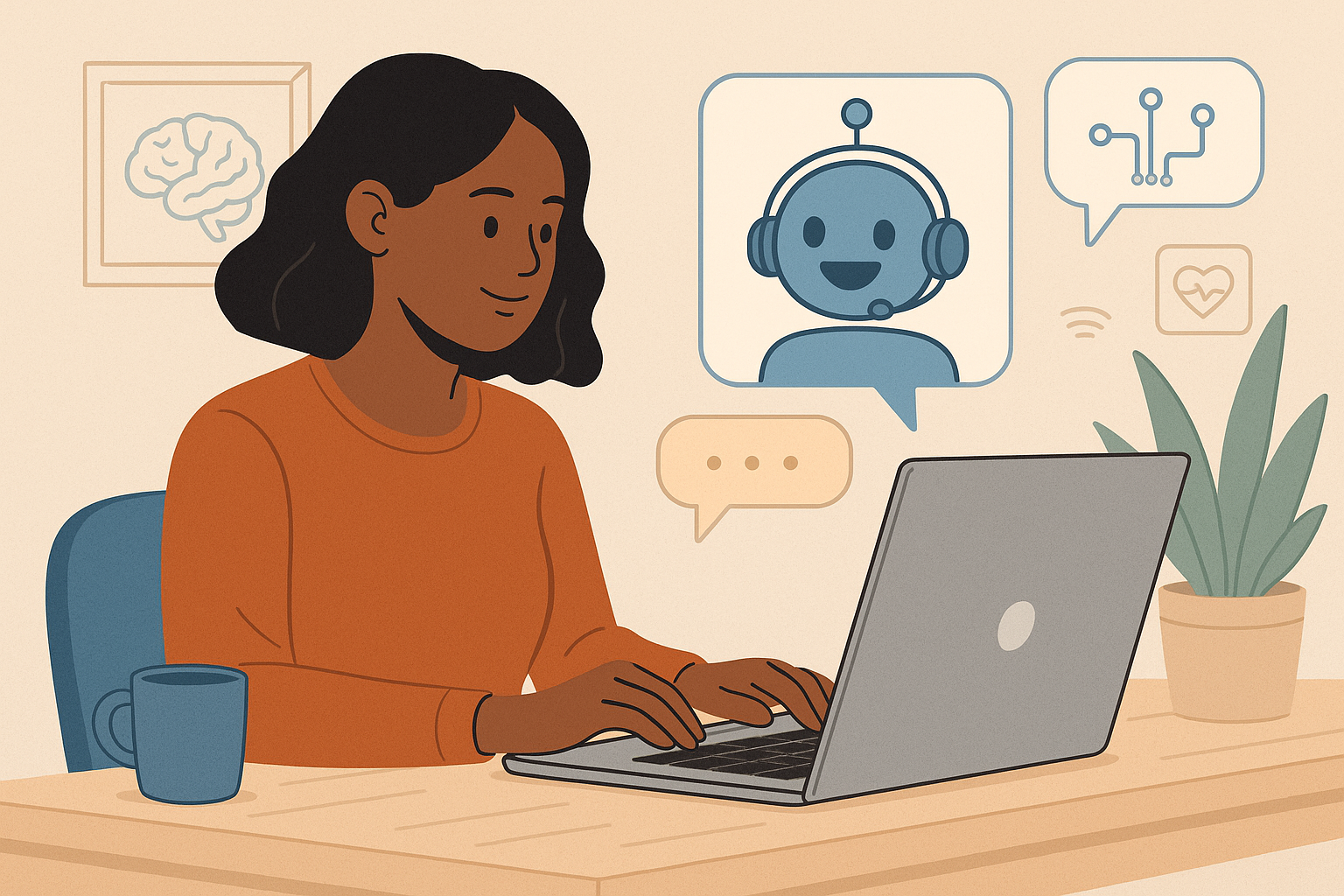Future Ready Minds
Created on-
September 30, 2025
AI-Enhanced Mental Health Tools: Opportunities, Risks, and Best Practices

AI is quickly becoming a game-changer in mental health care. From therapy bots to mood trackers, these tools are being integrated into how we support emotional well-being. In 2025, the conversation has shifted. We're no longer asking ifAI belongs in mental health but how we use it responsibly.
In this blog, we’ll explore how AI mental health tools are transforming care, the benefits they offer, the risks they carry, and how to use them wisely.
The Rise of AI in Mental Health Support
AI tools have moved beyond novelty. Today, they're found in apps like Woebot, Wysa, Replika, and GPT-based platforms offering coaching and emotional check-ins. They help users process feelings, track mood patterns, and offer grounding exercises. Some are integrated into school wellness programs and digital health platforms.
These tools are not replacing human therapists but rather offering support between sessions or where access to care is limited. They respond instantly, learn user patterns, and scale support in ways traditional therapy cannot.
Key Benefits of AI Tools
24/7 availability is one of the biggest advantages. Mental health challenges don’t follow business hours. AI support is there any time, helping users feel seen and heard.
Cost-effectiveness is another plus. Many AI tools offer free or low-cost services, making them more accessible, especially in under-resourced communities.
Personalized insights come from daily check-ins and mood tracking. The more someone interacts with the app, the more tailored the suggestions become. This can lead to greater self-awareness and earlier intervention.
The Risks and Ethical Dilemmas of AI in Therapy
But with great potential comes real concern. One of the major ethical risks of AI in therapy is the absence of empathy. A bot cannot offer the same emotional resonance as a human being. For users in crisis, this can feel cold or even unsafe.
Data privacy is another big issue. These apps collect sensitive emotional data. If not properly encrypted and managed, user information could be misused or hacked.
Then there’s the risk of overreliance. When people start using AI tools as substitutes for therapy, rather than supplements, problems can be missed or misinterpreted. Algorithms are not equipped to diagnose or manage complex emotional trauma.
What AI Can and Can’t Replace
It’s important to set realistic expectations. AI can support, guide, and inform. But it cannot replace the deep, nuanced connection between a trained mental health professional and a client.
A therapist picks up on nonverbal cues, tailors responses to past trauma, and builds trust over time. AI, no matter how advanced, cannot replicate this depth.
Best Practices for Using AI in Mental Health Settings
If you're a parent, coach, educator, or therapist, understanding the best practices for AI in mental health is key.
Start with reputable platforms. Look for certifications, clinical oversight, and transparent data policies. Avoid tools that make bold promises or lack clear privacy standards.
Introduce AI tools as supplements, not replacements. Encourage users to engage with real humans too—whether friends, family, or professionals. Teach children that while apps can be helpful, nothing replaces a conversation with someone who knows and cares about them.
Monitor use. For kids and teens, adult oversight is crucial. Know which apps they use, what data is collected, and how that data is stored.
For Parents and Schools
AI tools are becoming part of digital education and emotional literacy. Schools can use mood-tracking apps to check in with students. Parents can use them to start conversations about feelings and stress.
Still, these tools should be introduced with clear boundaries and guidance. Set time limits, talk about privacy, and make sure kids know when to ask for help from a real person.
Future Outlook: AI + Mental Health in 2025 and Beyond
As we move forward, expect to see AI tools integrate with wearables and VR. Imagine a wristband that tracks stress levels and prompts breathing exercises. Or a VR tool that helps teens rehearse calming strategies for anxiety in safe virtual settings.
We’ll also see more hybrid models, where AI helps therapists analyze trends in client responses between sessions. This can personalize care while still centering the human relationship.
But for all the tech, empathy remains irreplaceable. The goal should be balance: using AI where it adds value but not where it diminishes connection.
Takeaway
AI mental health tools offer real promise. They are accessible, affordable, and engaging. But they also come with limits and ethical responsibilities.
Use them as companions on the mental health journey—not the sole guide. Parents, educators, and coaches must lead the way in making smart, informed choices about their use.
Curious how to build emotional resilience in the digital age? Reach out to Future Ready Minds to explore our tech wellness programs and family coaching services.





.svg)